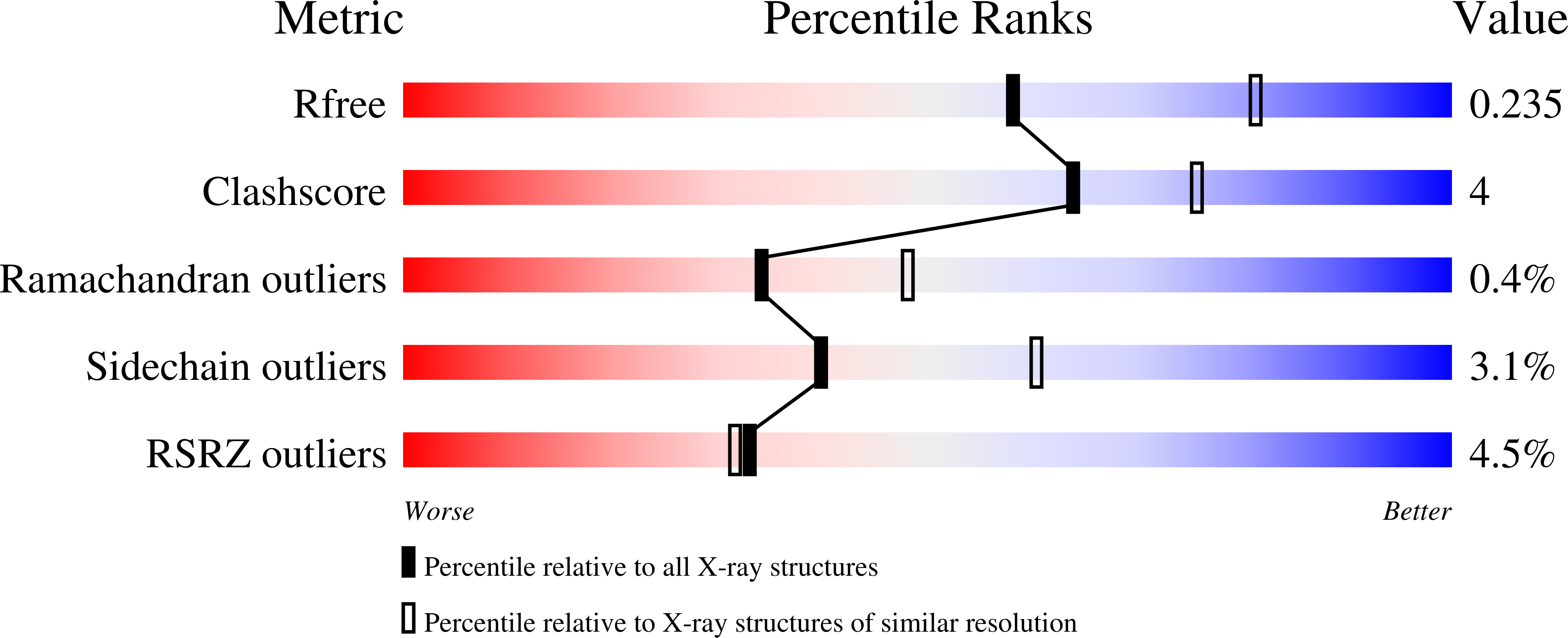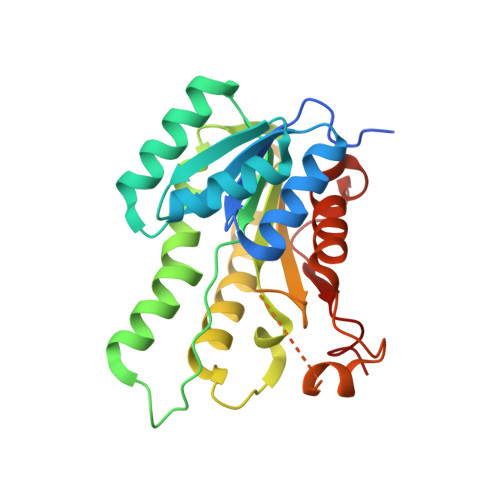Crystallographic analysis and structure-guided engineering of NADPH-dependent Ralstonia sp. Alcohol dehydrogenase toward NADH cosubstrate specificity.
Lerchner, A., Jarasch, A., Meining, W., Schiefner, A., Skerra, A.(2013) Biotechnol Bioeng 110: 2803-2814
- PubMed: 23686719
- DOI: https://doi.org/10.1002/bit.24956
- Primary Citation of Related Structures:
4I5D, 4I5E, 4I5F, 4I5G - PubMed Abstract:
The NADP?-dependent alcohol dehydrogenase from Ralstonia sp. (RasADH) belongs to the protein superfamily of short-chain dehydrogenases/reductases (SDRs). As an enzyme that accepts different types of substrates--including bulky-bulky as well as small-bulky secondary alcohols or ketones--with high stereoselectivity, it offers potential as a biocatalyst for industrial biotechnology. To understand substrate and cosubstrate specificities of RasADH we determined the crystal structure of the apo-enzyme as well as its NADP?-bound state with resolutions down to 2.8??. RasADH displays a homotetrameric quaternary structure that can be described as a dimer of homodimers while in each subunit a seven-stranded parallel ¦Â-sheet, flanked by three ¦Á-helices on each side, forms a Rossmann fold-type dinucleotide binding domain. Docking of the well-known substrate (S)-1-phenylethanol clearly revealed the structural determinants of stereospecificity. To favor practical RasADH application in the context of established cofactor recycling systems, for example, those involving an NADH-dependent amino acid dehydrogenase, we attempted to rationally change its cosubstrate specificity from NADP? to NAD? utilizing the structural information that NADP? specificity is largely governed by the residues Asn15, Gly37, Arg38, and Arg39. Furthermore, an extensive sequence alignment with homologous dehydrogenases that have different cosubstrate specificities revealed a modified general SDR motif ASNG (instead of NNAG) at positions 86-89 of RasADH. Consequently, we constructed mutant enzymes with one (G37D), four (N15G/G37D/R38V/R39S), and six (N15G/G37D/R38V/R39S/A86N/S88A) amino acid exchanges. RasADH (N15G/G37D/R38V/R39S) was better able to accept NAD? while showing much reduced catalytic efficiency with NADP?, leading to a change in NADH/NADPH specificity by a factor of ¡«3.6 million.
Organizational Affiliation:
Munich Center for Integrated Protein Science, CIPS-M, and Lehrstuhl f¨¹r Biologische Chemie, Technische Universit?t M¨¹nchen, 85350, Freising-Weihenstephan, Germany.

















